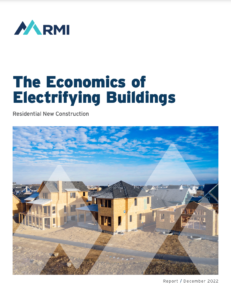Full Title: The Economics of Electrifying Buildings: Residential New Construction
Author(s): Lacey Tan, Mohammad Hassan Fathollahzadeh, Edie Taylor
Publisher(s): Rocky Mountain Institute
Publication Date: December 15, 2022
Full Text: Download Resource
Description (excerpt):
To help inform crucial policy and market decisions with up-to-date cost analysis information, RMI updated and expanded its 2020 analysis, The New Economics of Electrifying Buildings. Due to significant changes in gas and electricity rates and evolving construction costs, we examine the economic and climate impacts of building all-electric single-family new construction — homes that rely on electric appliances for space and water heating, cooking, and clothes drying.
Our analysis shows that all-electric, single-family new construction is more economical to build and operate than a home with gas appliances and has lower lifetime emissions in all nine cities studied. This is because mixed-fuel homes have gas furnaces, water heaters, air conditioning, and new gas connection costs. The all-electric home, by comparison, uses a single heat pump system for both heating and cooling and a heat pump water heater. Heat pumps also provide significant carbon and energy savings over gas appliances, resulting in a lower annual utility cost for the all-electric home.
